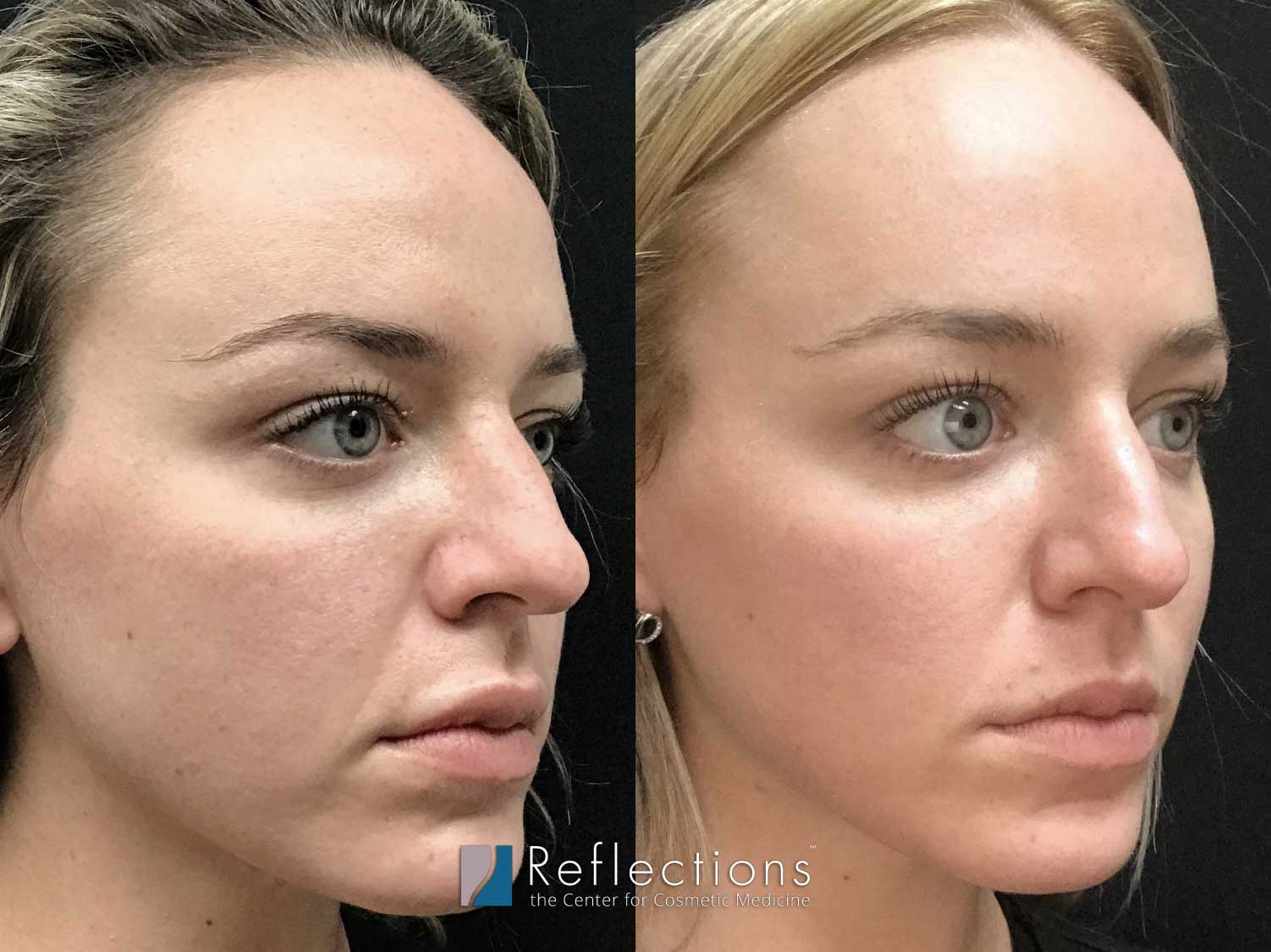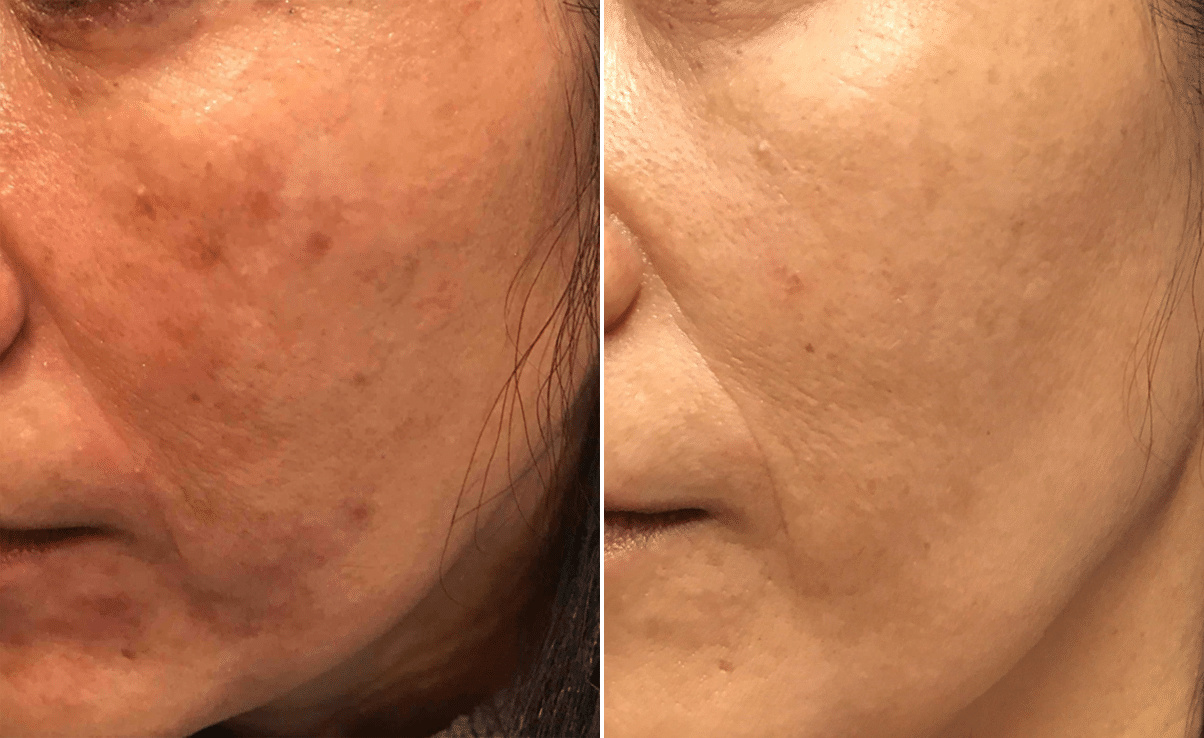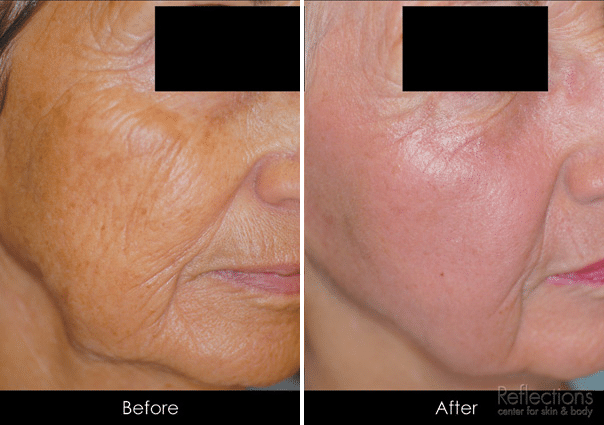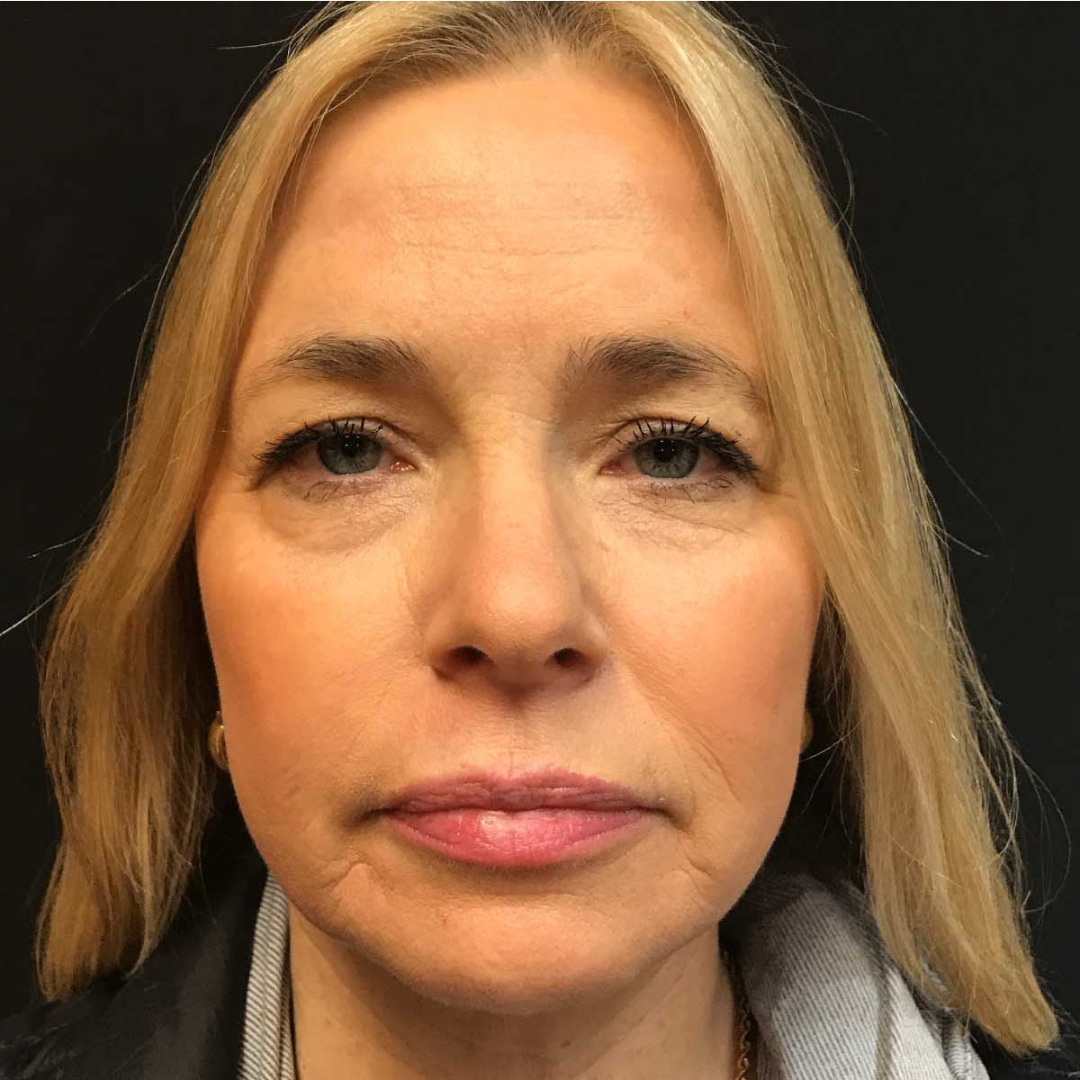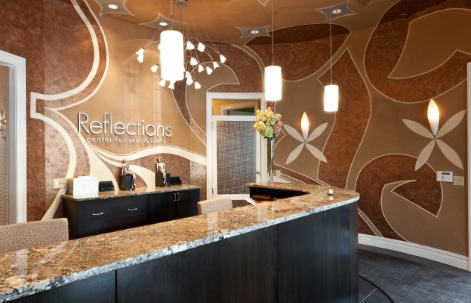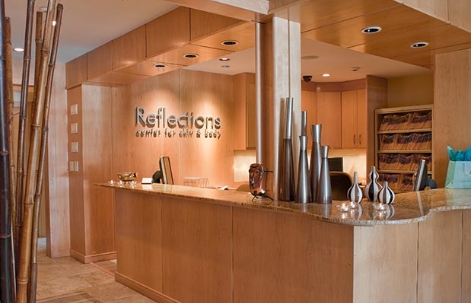One of the most common and noticeable signs of sun exposure are sunspots (technically called solar lentigos). Some sunspots are brown and tan, leading them to be mistaken for freckles; but true freckles don’t appear and disappear based on your sun exposure, the way sun spots do. How early sunspots appear is determined by heredity and the amount of sun exposure you’ve had in your life.
If you’re interested in sun damage removal for the hands, neck, chest, or other body parts, please visit our sun damage for body page.
Top Asked Questions About Sun Damage
- How do I get rid of sun damage on my face?
To truly get rid of sun damage, you need to kill off the damaged cells and encourage your body to build new ones. This has to be done in a controlled way to avoid scarring, burning, and other negative reactions. Retinols, Lasers, RF Microneedling, HIFU (highly focused ultrasound), Radiofrequency (RF), and other devices can do this, provided they are devices the FDA has approved (proven effective and safe) to remove sun damage, and that they are being used by a doctor who understands how to safely treat your skin.
- Can sun damage on your face be repaired?
Yes, for the most part, sun damage on your face can be repaired - though it is much easier to prevent it than repair. Lasers are almost always needed to help repair sun damage, as they are the best tool we have for removing pigmented spots of all kinds (brown, red, and dark spots). Lasers also help us tell the skin to replace old sun damaged areas with new skin. RF Microneedling, Sofwave, Ulthera, and other Radiofrequency (RF) and Ultrasound (HIFU) technologies can also be used to repair the deeper damage to collagen support deep within the skin. You'd be amazed what a few non-surgical treatments can do to improve the quality of sun damaged skin!
- What does sun damage to skin look like?
Sun Damage causes many different symptoms, including brown spots, red spots, and dark spots, fine lines & wrinkles, raised patches, roughness and texture irregularities, looseness (laxity), sagginess, crepeyness, and loss of firmness, uneven and dull complexion, enlarged pores, broken capillaries, and visible broken red blood vessels.
- When should I be worried about brown spots?
Brown spots are most often just a cosmetic concern and don’t warrant medical attention. However, if you notice a spot begins to change in appearance, such as color, shape, size, or texture, it’s important to see a medical professional right away.
- Are brown spots caused by the sun?
Brown spots are caused by long-term sun exposure. Although most people tend to get them as they age, you might notice them at a younger age if you skip sunscreen, spend a lot of time outside, or spend time in tanning beds (gasp!).
- Can sun spots turn into melanoma?
Sun spots don’t typically turn into skin cancer – moles more commonly become melanomas. However, if you notice anything suspicious about sun spots, it’s best to act quickly and have it checked.
- How do you treat sunspots?
There are many treatment options available for brown spots, but laser treatments remain our most preferred option. Our cosmetic physicians can recommend the best option from our huge selection of laser platforms.
- What do pre-cancerous sun spots look like?
Called actinic keratoses, these growths are small, dry, scaly patches that typically can be felt but are not easily seen. Most times, they don’t become cancerous but can still be a cosmetic concern.
What Does Sun Damage Look Like?
The good news is that Reflections has the technology and expertise to safely remove sunspots and sun damage on the face, for all skin types and tones. Our advanced laser treatments are a great way to rejuvenate your skin, and when you visit us, we’ll also teach you how to protect yourself from further sun damage.
Here is what sun damage looks like:
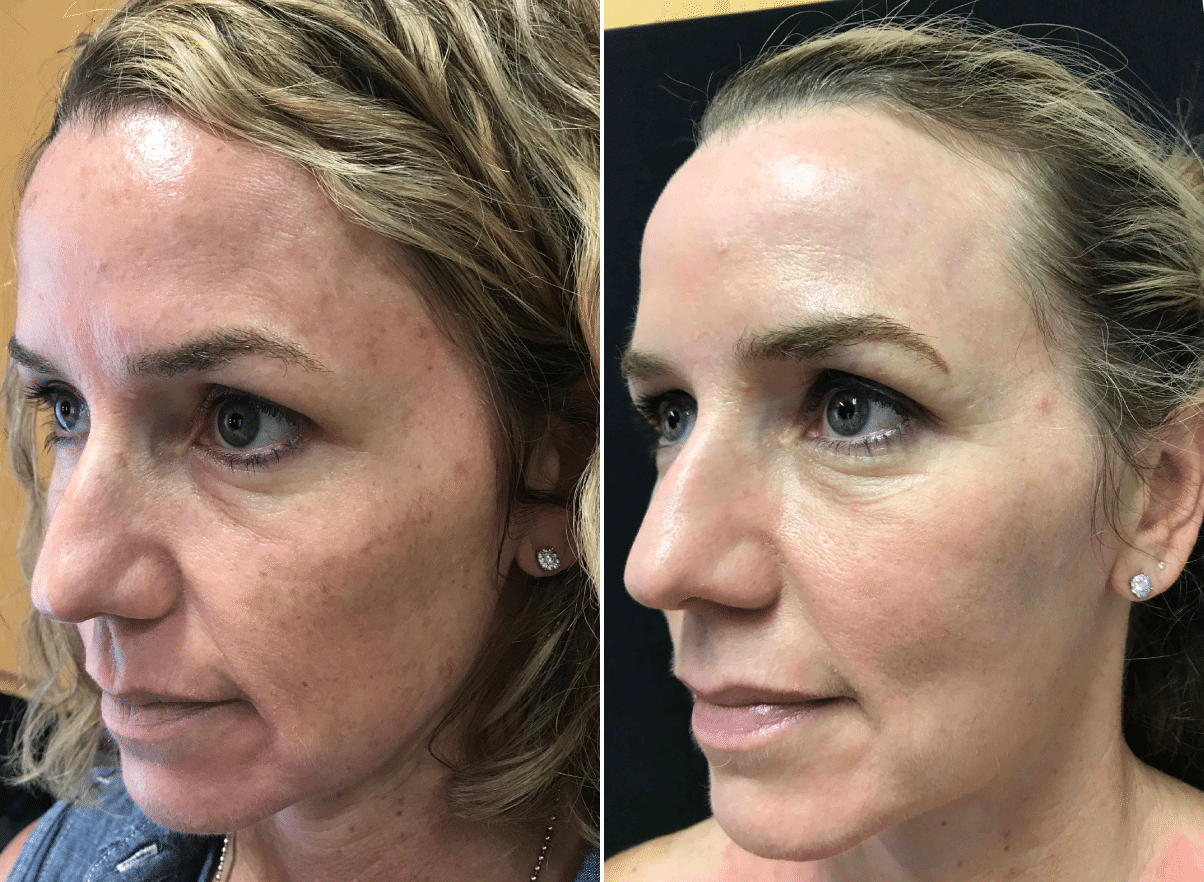
Sunspots
Brown, Tan, black or even grey in color, these dark lesions are flat and most commonly appear on the cheeks, forehead, nose, chest, arms, and hands, and are usually most noticeable on the left side of the face, especially for people who often drive a car – the sun just loves that driver’s side window!
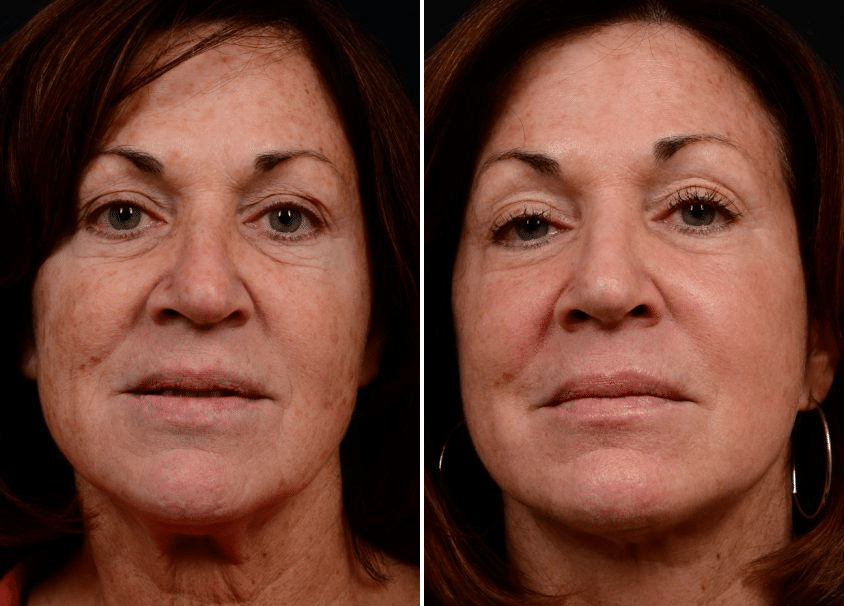
Freckles
True freckles don’t appear and disappear based on your sun exposure, the way sun spots do. How early sunspots appear is determined by heredity and the amount of sun exposure you’ve had in your life.
Advanced Laser Technology — Breakthrough Treatment for Sunspot Removal
Q-Switched Lasers
Q-Switched lasers are a great approach for removing pigmented lesions from the skin. These lasers deliver short pulses (a billionth of a second) of very intense laser light, fragmenting and removing the pigment. The energy has little or no effect on the surrounding skin. Sun damage disappears and the skin appears more youthful. Most sunspots can be removed within one to two treatments, spaced four weeks apart. Some deeper lesions will require more treatments. Sun exposure needs to be avoided after the treatment and don’t forget to apply sunblock with a 30+ rating every day to protect yourself from further sun damage1.
Fraxel Re:Store Dual
Fraxel Re:Store Dual laser is a revolutionary laser technology that makes sunspots disappear and leaves your skin softer, smoother and fresher. It also improves the appearance of fine lines, enlarged pores, and other textural issues, making it a good choice for people who are looking to address these concerns as well. This FDA approved laser works by producing thousands of tiny columns of microscopic treatment zones in your skin, leaving the surrounding skin unaffected. Following each treatment, the body’s natural healing process creates new healthy tissue to replace skin imperfections. The second laser wavelength targets sunspots, leaving the skin tone more even and pleasing to the eye. All with minimal downtime!
Patients typically need from two to three procedures for pigment improvement, spaced two to four weeks apart. Your skin will continue to improve over for three to six months after your treatment.
Fraxel Re:Pair CO2
Fraxel Re:Pair CO2 is another advanced laser for treating sunspots that also provides added skin rejuvenation benefits. Fraxel Re:Pair works by removing old, damaged skin and allowing new collagen to form resulting in tighter, fresher, younger looking skin. More aggressive than Fraxel Re:Store, the Fraxel Re:Pair does require some downtime. Depending on how aggressive your treatment is you can expect between four to seven days of healing time. You’ll only need one treatment and will notice improvement right away with dramatic results within three to six months. Fraxel Re:Pair is commonly used for patients who are looking for help with fine lines, wrinkles, and loose skin in addition to their sunspots3.
Starlux IPL
Starlux IPL is an intense pulsed light (IPL) treatment that uses high intensity pulses of visible light to target sunspots and other pigment abnormalities. IPL works by penetrating the tissue with light that is absorbed by the lesion’s melanin. The body’s natural processes then remove the injured tissue resulting in a more even complexion and a restored youthful appearance. Unlike lasers, IPL systems deliver many wavelengths in each pulse of light instead of just one2.
Reflections patients love this gentle, noninvasive approach to removing sunspots as it leaves the top layer of the skin intact and requires little to no downtime. Your number of treatments depends on the severity and number of your sunspots, but typically two to three treatments are performed, spaced about one month apart. Results become apparent even after the first treatment.
Starlux IPL is not for our patients with darker skin types. For these patients we will generally advise alternative treatments that are customized to their unique needs2.
Clear + Brilliant
The Clear + Brilliant laser works like a gentler version of the Fraxel lasers, and is a wonderful way to maintain you healthy and vibrant skin tone we’ll help you to achieve4. This is a great maintenance treatment, as there’s very little downtime with this laser option.
Additional Treatments For Sunspots & Sun Damage
Other treatments for Sun spots include Portrait PSR Resurfacing, erbium laser resurfacing, long-pulse Alexandrite laser, Isolaz, Levulan PDT, Cryotherapy, DermaSweep, and over the counter and prescription topical therapies.

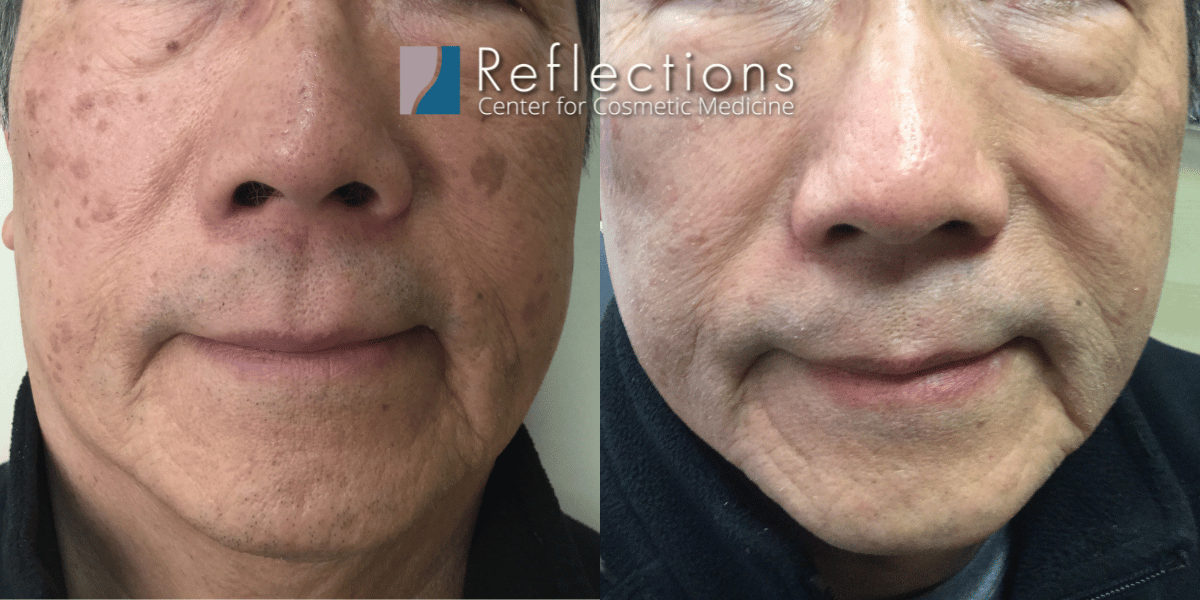
Procedures:
1 Session Each with Q-Switched Yag and Q-Switched Ruby Lasers for Sun Spots on Face
View More Sun Damage Treatment Before & Afters
More Before & Afters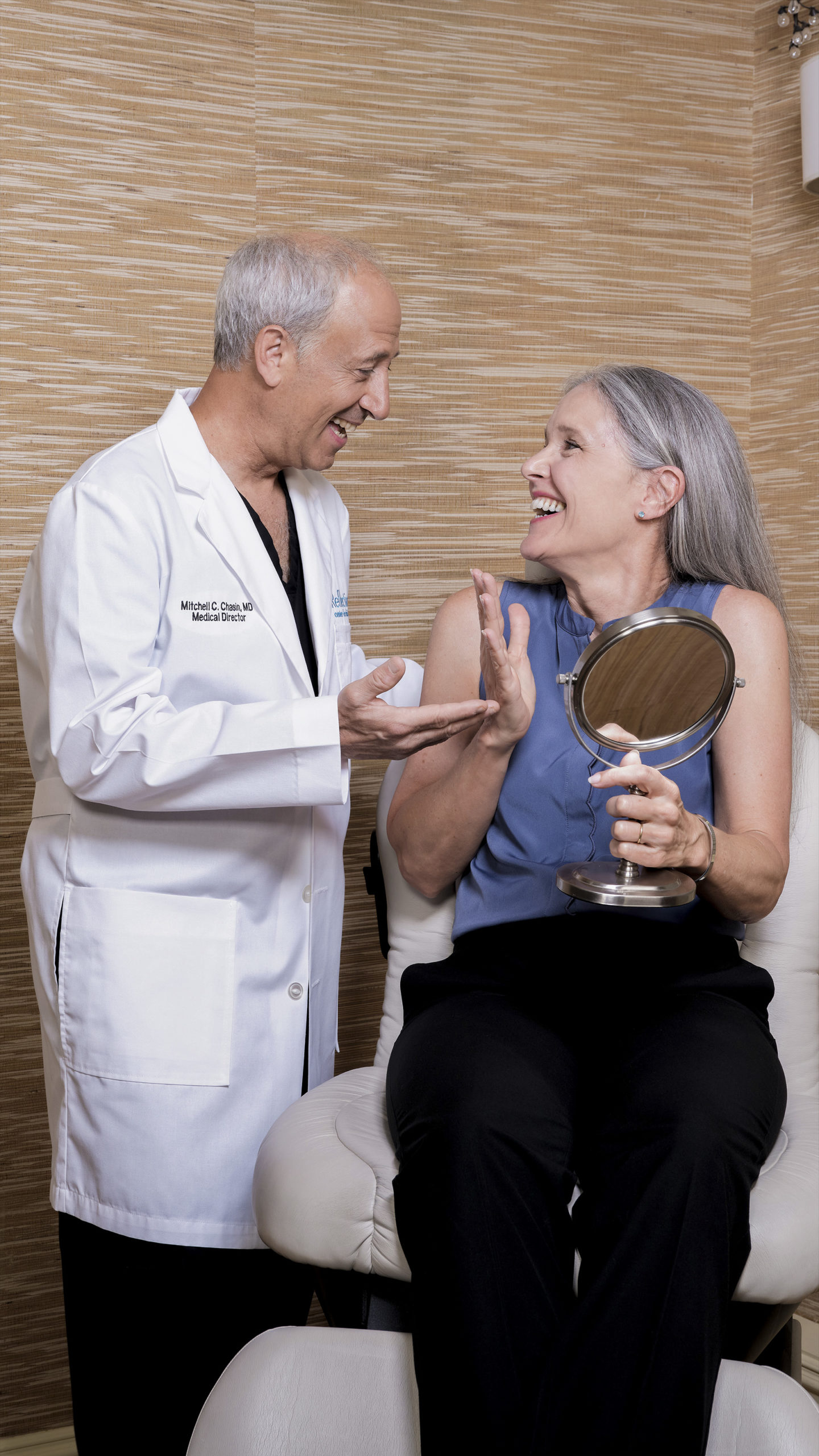

A More Radiant You
The team of dedicated cosmetic physicians at Reflections are skilled at selecting the right treatment or combination of treatments, based on your skin type and treatment goals. We look forward to creating a customized treatment plan at your complimentary consultation.
The good news is that Reflections has the technology and expertise to safely remove sunspots. Our advanced laser treatments are a great way to rejuvenate your skin, and when you visit us, we’ll also teach you how to protect yourself from further sun damage.
Why not call today and discover how Reflections’ approach laser facial rejuvenation can restore a natural, more youthful radiance? For a complimentary consultation, please call (732) 356-1666.
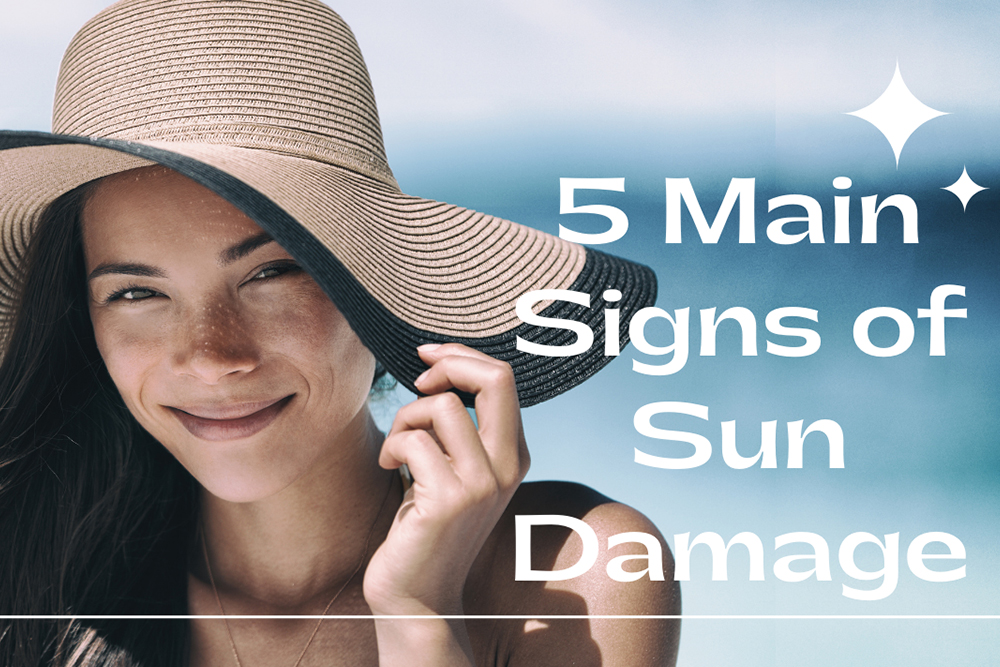
Blog
5 Main Signs of Sun Damage
Sun damage doesn’t happen overnight. Repeated exposure to UVA rays is...
Read More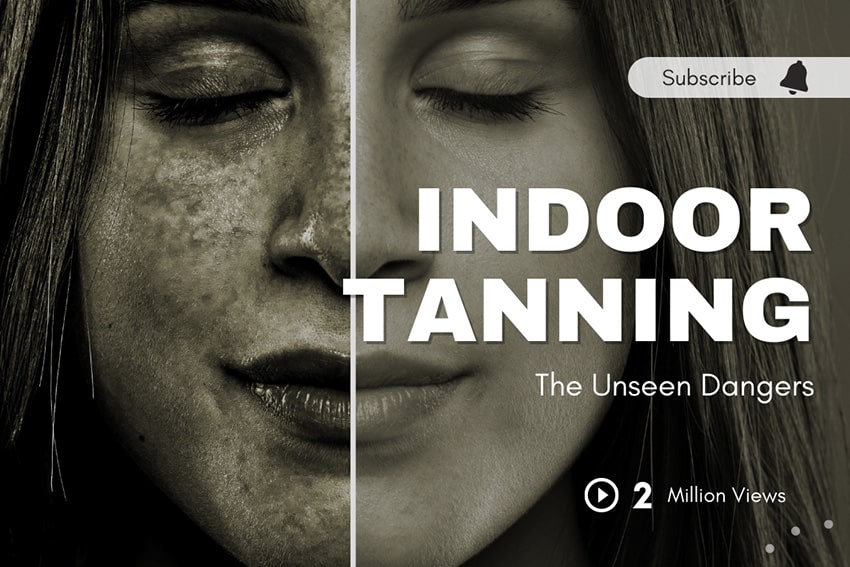
Blog
Aesthetic Warnings Shown To Curb Indoor Tanning Behaviors
According to ScienceDaily.com, focusing on the negative aesthetic effects of...
Read More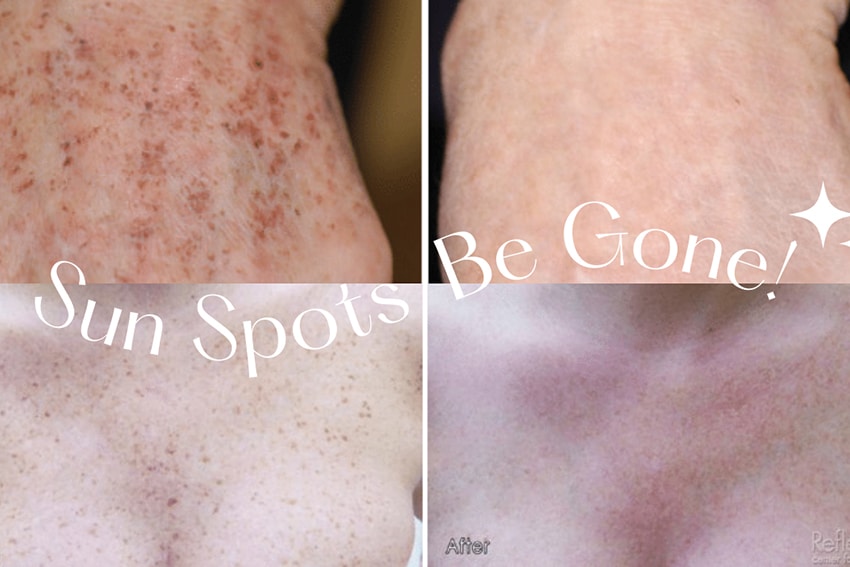
Blog
Shining a spotlight on sunspot removal.
Sunspots are dark, flat lesions that are brown, grey or black in color....
Read MoreSchedule Your Free Consultation
With One Of Our Physicians
Schedule Now
Sources:
1. TSE, Y., LEVINE, V. J., MCCLAIN, S. A. and ASHINOFF, R. (1994), The Removal of Cutaneous Pigmented Lesions with the Q-switched Ruby Laser and the Q-switched Neodymium: Yttrium-Aluminum-Garnet Laser. The Journal of Dermatologic Surgery and Oncology, 20: 795–800. doi: 10.1111/j.1524-4725.1994.tb03707.
2. Babilas, P., Schreml, S., Szeimies, R.-M. and Landthaler, M. (2010), Intense pulsed light (IPL): A review. Lasers Surg. Med., 42: 93–104. doi: 10.1002/lsm.20877
3. Lawrence S. Bass MD; Rejuvenation of the Aging Face Using Fraxel Laser Treatment; DOI: http://dx.doi.org/10.1016/j.asj.2005.03.003 307-309 First published online: 1 May 2005
4. Amir M Karam, Mitchel P Goldman; Rejuvenation of the Aging Face; JP Medical Ltd, Aug 28, 2015; pages 91-104
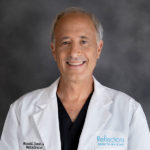
Dr. Mitchell Chasin is a Cosmetic & Laser Physician at Reflections Center. Dr. Chasin believes strongly that the best cosmetic physicians are those who are dedicated to mastering their craft through continuing education and collaboration with the industry’s top doctors.




